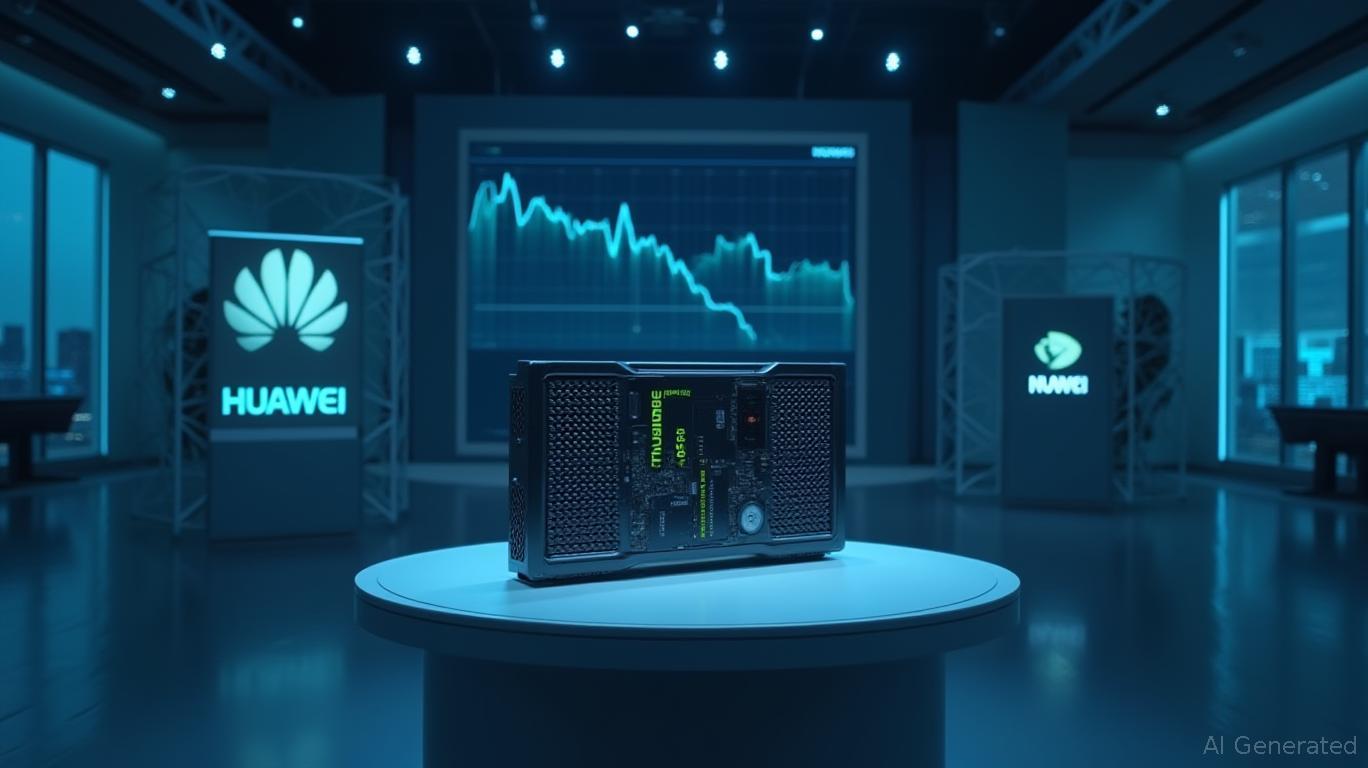NVIDIA's Vulnerability: How Algorithmic Innovation and In-House Chips Could Trigger a Margin Collapse
The semiconductor industry is entering an inflection point. NVIDIA's dominance in AI-driven GPU sales—fueled by its CUDA ecosystem and cutting-edge architectures like the H100—faces existential threats from two vectors: cost-efficient algorithmic advancements (e.g., DeepSeek's MLA and MoE architectures) and in-house chip development by tech giants (e.g., Huawei's Ascend series). Together, these forces could erode NVIDIA's pricing power, compress margins, and create a rare entry opportunity for investors as overvaluation corrects.
Ask Aime: Is now the time to invest in NVIDIA's GPU rivals after NVIDIA's market dominance is challenged?

The Threat from DeepSeek: Performance at a Fraction of the Cost
DeepSeek's rise epitomizes the disruption. Its 671B-parameter V3 model achieves 60–70% of NVIDIA H100 performance in FP16 operations at 30–50% of the cost. For instance, DeepSeek's inference machines start at RMB 300,000–500,000 ($42,000–$69,000), compared to the H100's RMB 20 million ($2.8 million). This cost advantage is amplified by software innovations like Multi-Head Latent Attention (MLA), which reduces memory usage by 5–13%, and Mixture-of-Experts (MoE) architectures that activate only necessary parameters during inference. The result? A 43% reduction in training costs for DeepSeek's R1 model versus Western peers.
NVIDIA's margins have already started to fray. The company's gross margin dropped to 61.6% in Q3 2025 from 64.7% in Q4 2023, reflecting rising competition and R&D investments. DeepSeek's price-performance ratio could accelerate this decline, as enterprises—especially in Asia—opt for cost-effective alternatives to NVIDIA's premium GPUs.
These cost advantages are amplified by software innovations like Multi-Head Latent Attention (MLA), which reduces memory usage by 5–13%, and Mixture-of-Experts (MoE) architectures that activate only necessary parameters during inference. The result? A 43% reduction in training costs for DeepSeek's R1 model versus Western peers.
The Rise of In-House Chip Ecosystems: A Fracturing Supply Chain
DeepSeek's success isn't isolated. Tech giants are building vertically integrated chip ecosystems to reduce reliance on NVIDIA:
1. Huawei's Ascend 910C: Designed to outperform NVIDIA's H200 with 5–13% lower memory usage via MLA, this chip targets China's AI market. Orders for 70,000 units valued at $2 billion suggest strong adoption.
2. AMD's MI300X: Offers 192GB HBM3 memory—double the H100's 80GB—and competitive throughput at a lower price point. While its software ecosystem lags CUDA's maturity, it's a viable option for cost-sensitive buyers.
3. Taiwan's Foundries: TSMC and SMIC are scaling production of AI chips, reducing NVIDIA's leverage over supply chains.
These developments threaten NVIDIA's moat of proprietary architecture + software stack dominance. As competitors close the performance gap and undercut pricing, NVIDIA's ability to justify 300–500% premiums over alternatives diminishes.
Financial Implications: Margin Compression and Growth Ceiling
NVIDIA's valuation hinges on sustained AI-driven revenue growth. However, three risks loom large:
1. Pricing Pressure: Competitors like DeepSeek and AMD are forcing
2. CapEx Arms Race: NVIDIA's R&D spending hit $8.68 billion in 2024, up 18% year-over-year, to maintain technical leadership. Sustaining this pace while margins shrink could strain profitability.
3. Market Saturation: The AI chip market is maturing faster than expected. With enterprises opting for hybrid GPU setups (e.g., H100 for training, Ascend for inference), NVIDIA's addressable market narrows.
NVIDIA's stock has already underperformed AMD's in 2024–2025, down 15% vs. AMD's 22% rise. This divergence hints at investor skepticism about NVIDIA's long-term moat.
Investment Implications: A Buying Opportunity in a Margin Correction
NVIDIA's stock trades at 35x forward P/E, reflecting expectations of perpetual growth. However, the risks outlined above suggest a valuation reset is inevitable. Key catalysts for a pullback include:
- Blackwell supply constraints: Despite TSMC's assurances, delays in Blackwell production could limit NVIDIA's revenue upside.
- DeepSeek's API pricing war: Its $0.55/million tokens API fee—vs. OpenAI's $15+—is pressuring cloud providers to cut NVIDIA GPU costs.
- Inflation-driven enterprise spending cuts: As capex tightens, companies will prioritize cost-effective solutions like DeepSeek's Atlas units.
Actionable Takeaway:
- Bearish: Sell NVIDIA if its stock breaches support at $180 (20% below recent highs).
- Bullish: Consider a staged entry if the stock dips to $150–$160, with a focus on Blackwell adoption rates and margin trends.
Final Analysis
NVIDIA remains the semiconductor leader in high-end AI, but its valuation no longer accounts for the structural threats from algorithmic efficiency and in-house chip ecosystems. Investors should treat dips below $180 as opportunities to capitalize on a correction—a chance to buy a once-unassailable tech giant at a more reasonable multiple, provided its Blackwell rollout stays on track.
The race for AI supremacy is now a marathon, not a sprint—and NVIDIA's competitors are catching up fast.

Comments
No comments yet